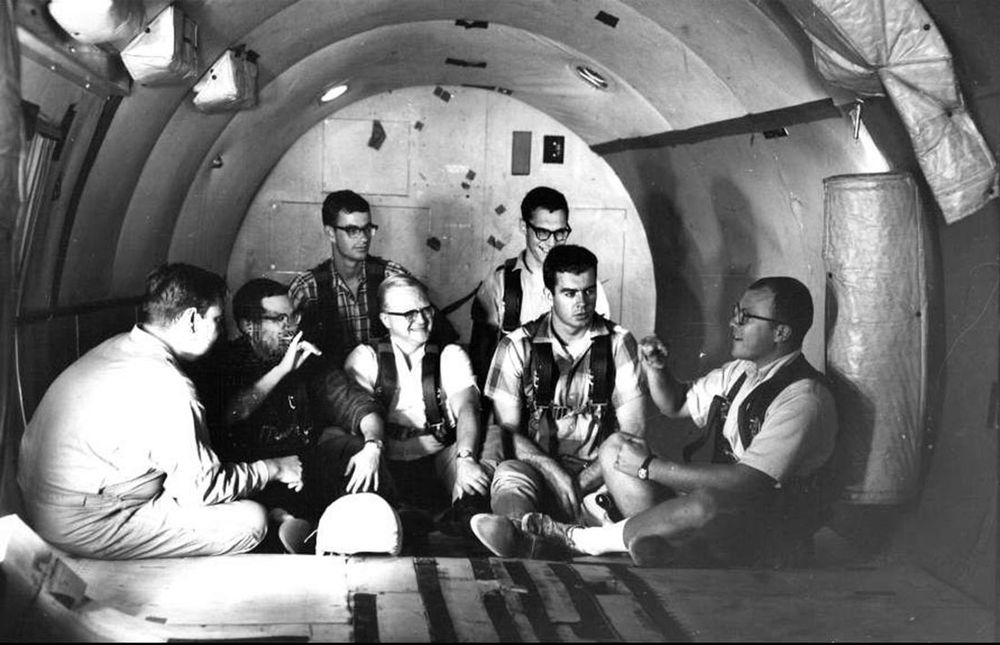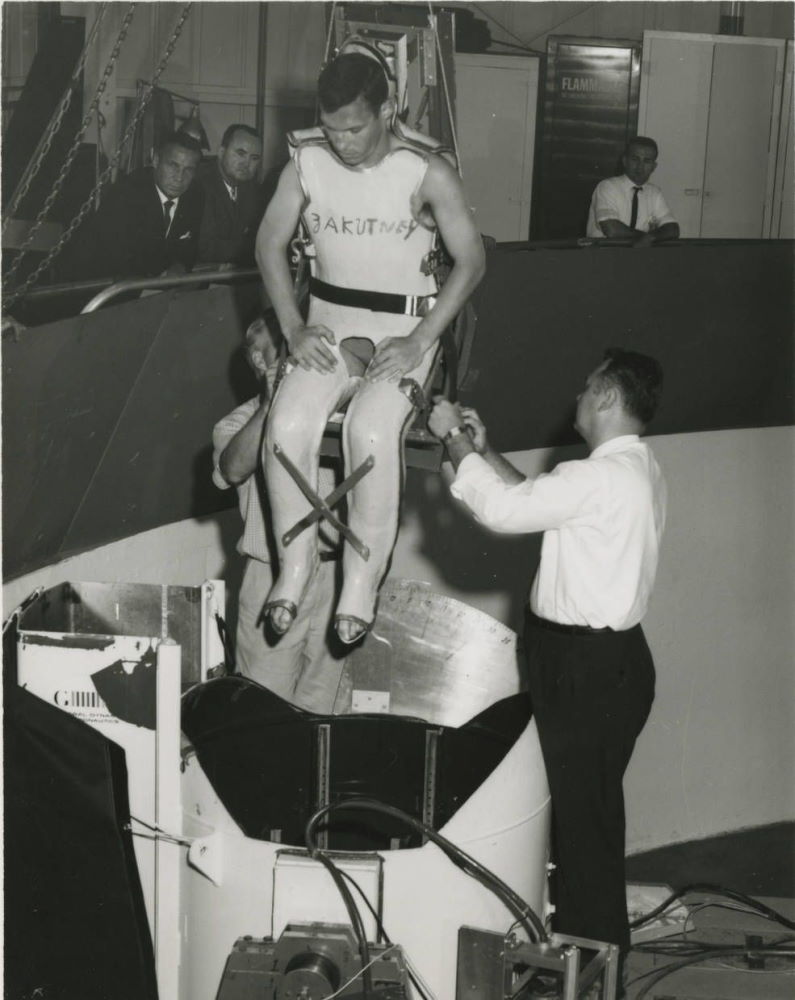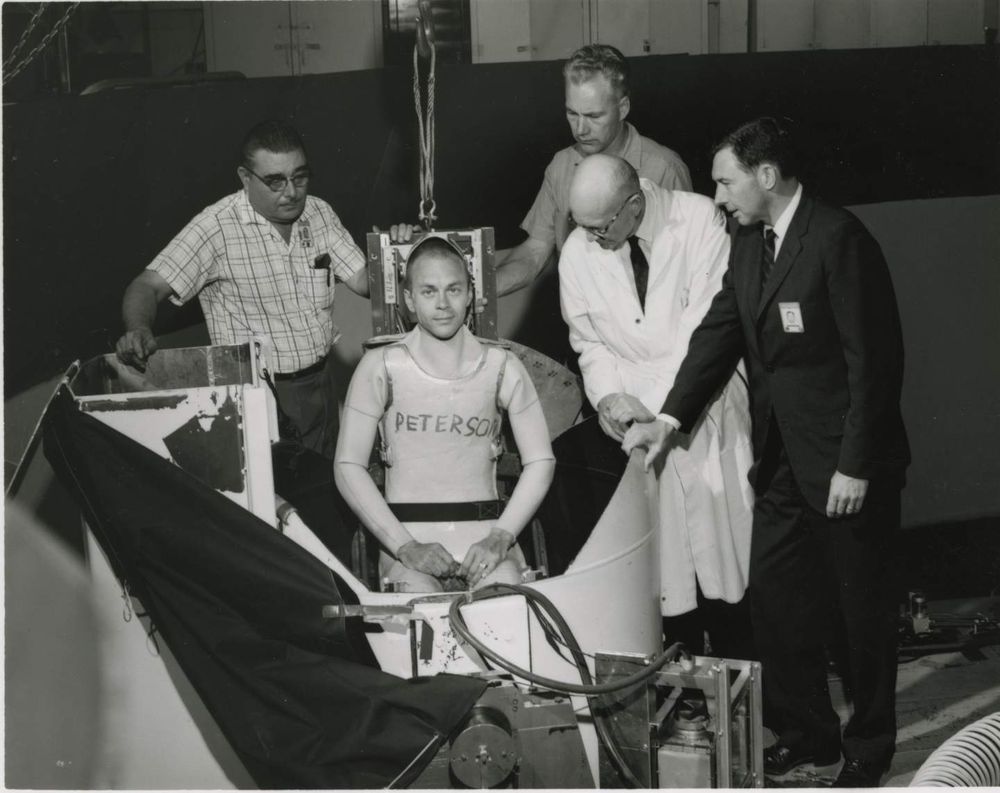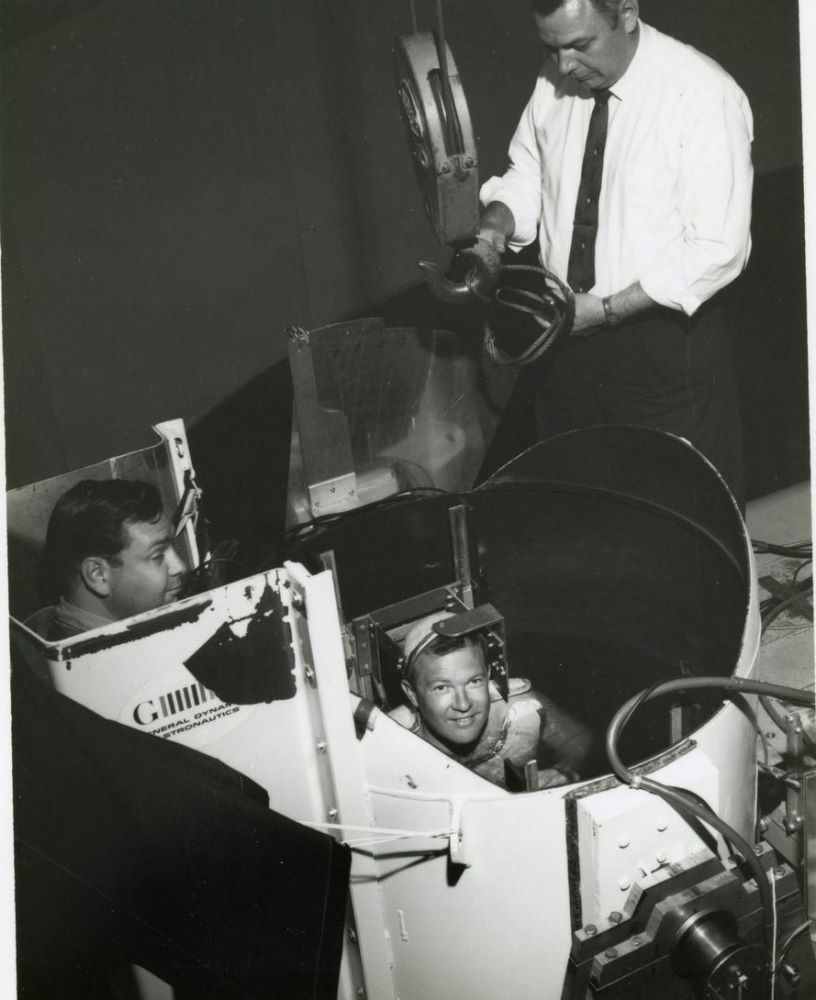In the late 1950s, when NASA was still a young organization, one of the biggest challenges for them was to determine whether human spaceflight was a realistic possibility. One thing that was poorly understood was the the effects of prolonged weightlessness on the human body, and whether motion sickness could hinder space missions and endanger crews.
In order to test how the body might react to the stomach-churning rigors of spaceflight, NASA needed people who were immune to motion sickness. And for that, they turned to Gallaudet College (now called Gallaudet University) that specializes in education for the hearing impaired. NASA recruited eleven men from the institute, and for nearly a decade subjected them to some of the most punishing experiments. These men became known to history as the “Gallaudet Eleven”.

Deaf subjects having a chat before their zero-gravity flight. Photo: U.S. Navy/Gallaudet University collection
In a weightless environment, most people tend to fall sick, because the organs of balance that are located in the inner ears can no longer receive cues from gravity, cues that enables us to detect which way is up and which way is down. When this vital sensory cue is eliminated, the brain gets disoriented producing an uncomfortable sickness and an urge to throw-up. This is the same sort of sickness passengers feel on a ship on rolling seas.
Of the eleven men chosen, all but one had become deaf due to childhood spinal meningitis. This usually viral infection attacks the spinal cord and the brain, but can quickly spread to other parts of the body, such as the inner ear, where it can damage the cochlea leading to permanent hearing loss. The damage to the vestibular system of the inner ear made the “Gallaudet Eleven” immune to motion sickness, and thus, perfect candidates for spaceflight experiments. However, lack of hearing was not the only criteria for selection. Endurance of motion was what mattered most.

Harry Larson stands in a 20-foot slow rotation room. Photo: Gallaudet University Archives/Harry Larson collection
From 1958 to 1968, the men participated in various weightlessness, balance and motion-sickness experiments that helped NASA scientists better understand how the human body responded to foreign gravitational environments. In one test, the men were strapped to a contraption and rotated and tilted, after which they were asked to find the horizon with one or both eyes covered. In another experiment, one subject was locked in a chamber and was gradually deprived of oxygen. He was asked to write his name repeatedly until it became a scribble. Another subject was made to stand for six hours straight, while researchers took photos of his eyes. One subject rode Empire State Building express elevator up and down continuously for hours in a vain attempt to induce nausea. Another had to draw his own blood while spinning in a centrifuge pod.
In one of the longest experiments, four subjects spent 12 straight days inside a 20-foot wide rotating room spinning at 10 revolutions per minute, 24 hours a day, stopping only in the morning to replenish supplies. Multiple experiments were conducted on the subjects inside the room, which included testing their cognitive abilities (subjects were asked to type in sequences on keypads and open padlocks with memorized codes) as well as their physical dexterities, such as the ability to hold a stylus steady in holes without touching the edges, and tossing darts while spinning. Each night the men slept with their heads toward the center “like spokes on a wheel.”

John Zakutney is lowered down into a centrifuge pod. Photo: NASA/U.S. Navy/Personal collection of David Myers
Some were tested for weightlessness on zero-gravity flights, commonly called “vomit comets”. Others were sent to Nova Scotia to ride the choppy waters of the Atlantic. The deaf subjects felt nothing. They whiled away their time playing cards and enjoying their Arctic adventure, while the researchers themselves were so overcome with sea sickness that the experiment had to be canceled.
Barron Gulak, one of the participants, later remarked: “In retrospect, yes, it was scary... but at the same we were young and adventurous.”
In some zero-gravity flight, subjects were tested for ocular counterrolling, where the eyeball rotates back due to gravitational pull. Jerald Jordan described one such flight.
“There was a doctor sitting, facing me while I rode backwards, and the pilot did aerobatics. Nothing happened, of course, except I had a great time.”
None of the men went to space, but through their endurance and dedication, the Gallaudet Eleven provided valuable information that helped researchers unravel the mystery of human sensory systems and learn how the body responds to extreme conditions. This knowledge proved invaluable in preparing astronauts for future space flights.

Donald Peterson prepares for a test in a centrifuge. Photo: Gallaudet University Archives

A test subject inside a centrifuge pod. Photo: Gallaudet University Archives
References:
# How 11 Deaf Men Helped Shape NASA's Human Spaceflight Program, https://www.nasa.gov/feature/how-11-deaf-men-helped-shape-nasas-human-spaceflight-program
# Deaf Space Program Pioneers, https://www.deaf-interpreter.com/deaf-space-program-pioneers/
# Samantha Mathewson, Museum Honors 11 Deaf Men Who Helped NASA Send Humans to Space, https://www.space.com/36789-deaf-men-nasa-spaceflight-museum-exhibit.html
# https://www.gallaudet.edu/news/deaf-difference-space-survival



Comments
Post a Comment